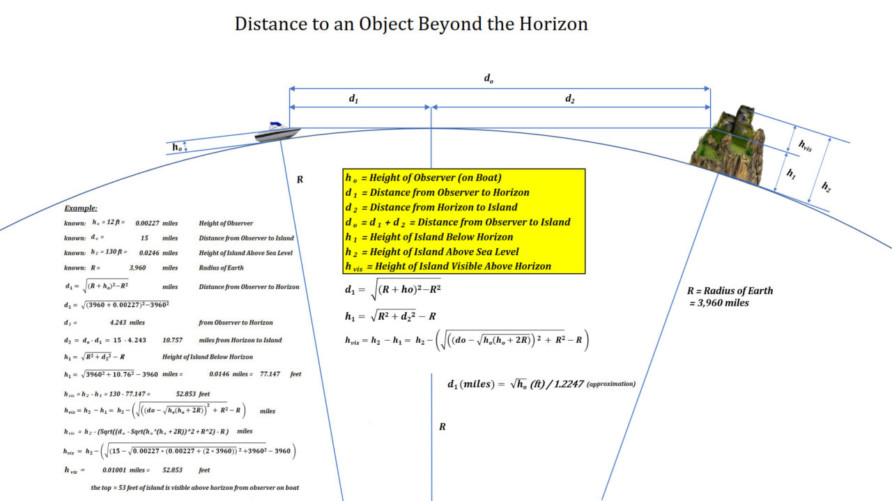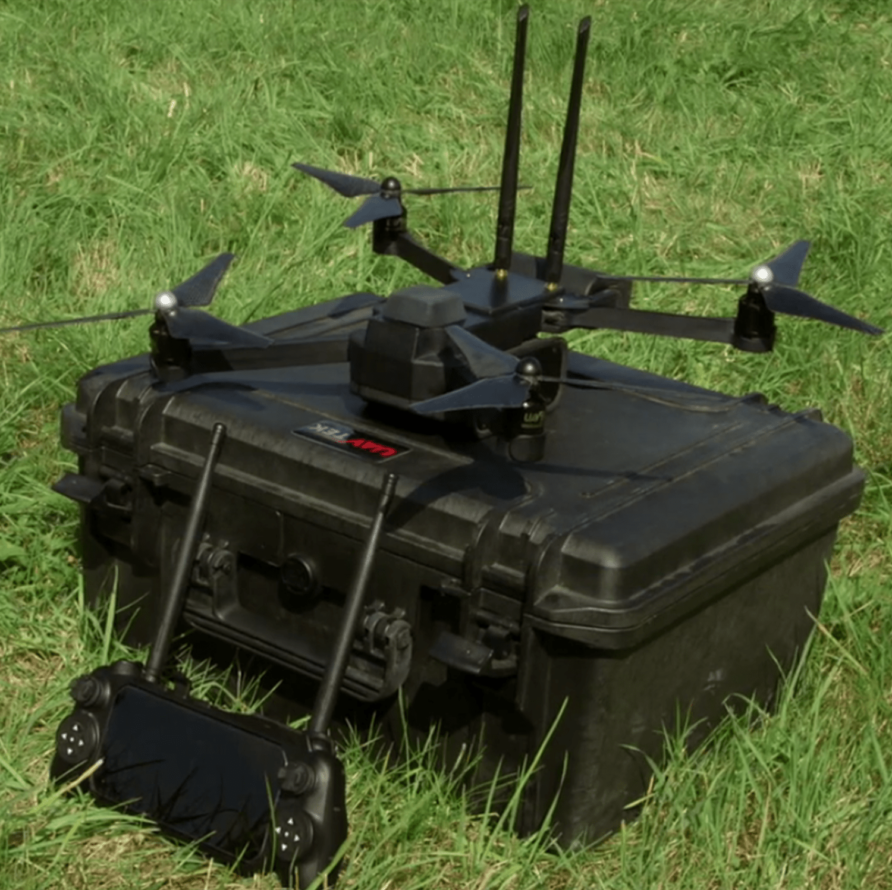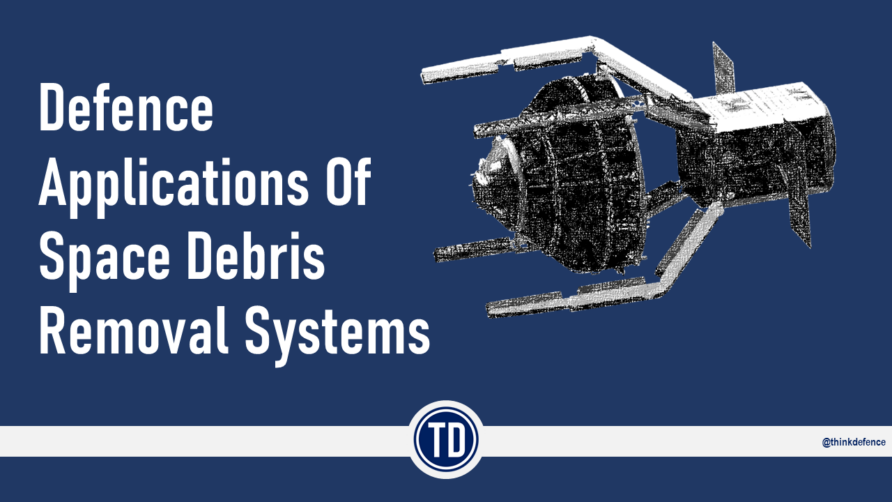Tethered drones (or uncrewed aerial systems — UAS) offer a potential solution to the Achilles heel of the vast majority of small UAS, their endurance.
Getting up high to take a look…

Whilst there are many specific use cases such as facility inspection and broadcasting, most will use UAS as a means of lofting a sensor higher than a mast or standing in a tree. Calculating the distance to the horizon requires the use of some fairly complex equations, explained at this link and expressed in the image below
A 2m high person can see another 2m tall person at about 10 km (assuming artificial optics). Raise the 2m to 6m, a typical elevating mast, that 2m high person can now be detected at 14 km.
Put that same sensor on a UAS at 30m and those observed areas start to increase dramatically. At 30m, the same 2m targets can be observed at just under 25 km.
The world is not perfectly obstruction-free, and at those ranges, a simple optical sensor would need some augmentations. But I think you can see the obvious benefits of standing on a very tall hill, metaphorically, as did Samuel Cody and the Royal Engineers all those years ago.

Small UAS, therefore, provide the military user with a range of advantages before we start getting into the realms of arming them.
This is not free though, most small UAS have limited endurance and payload, and the higher the payload, usually, the smaller the endurance. The Proteus from UAV Tek in Cheltenham, is just one example, with an endurance of about 45 minutes.

Users can always carry spare batteries and there are even hydrogen fuel cell solutions, the video below shows one such example from ISS Aerospace in Berkshire, with flight times of up to 120 minutes.
Another problem with conventional UAS is their training requirement, developing and maintaining the skill set is not easy and needs constant maintenance. Whilst in use, they will also require an operator.
Tethered Drones
The CAA describes tethered UAS as;
A tethered UAS is one where the unmanned aircraft remains securely attached (tethered) via a physical link to a person, the ground or an object at all times while it is flying. The tether normally takes the form of a flexible wire or a cable and may also include the power supply to the aircraft as well.
Operations with a tethered UAS can be used as an efficient solution in a number of cases, for example where an operating area is restricted, or when the required flight time exceeds the normal endurance of a free flying battery powered aircraft.
Tethered drones replace or supplement the onboard battery with a DC umbilical cable, sensor feeds can also be routed onto the cable to avoid transmitting using radio signals if required. The tether is paid out from a drum, and electromechanical devices ensure tension is maintained if the base station moves.
With a tether, endurance is measured in hours or even days. Systems can stay aloft with little or no user intervention and provide 24/7 coverage for surveillance, convoy overwatch, base protection and other applications. Many now also allow the base station to move at speeds of up to 25mph (ca. 40 km/h) or more.
This video provides a good overview of such a readily available system
One of the greatest challenges for tethered UAS designers is the weight of the tether cable itself, too heavy the UAS will simply be unable to fly. Most designs now use high-voltage DC signals that can utilise thinner conductors. This article provides a good background on these power challenges.
Systems can be networked together to create a wide-area view, Logos Technology in the US have released a version of their wide-area surveillance system specifically for tethered UAS, called the MicroKestrel
A miniaturized version of the Kestrel aerostat-based system, MicroKestrel delivers wide-area motion imagery (WAMI) from tethered Group 1 unmanned aircraft systems (UAS). This micro-WAMI system provides 180- or 360-degree coverage of an area up to 20 square kilometres in size. Available in short- and long-range versions, MicroKestrel supports the user with uninterrupted monitoring of live and recorded imagery. Powerful and portable, MicroKestrel delivers unparalleled situational awareness instantly’s notice.
The video below provides an overview
Other manufacturers include
In addition to sensor payloads, many manufacturers have demonstrated signals intelligence, communications, and even counter UAS capabilities with tethered systems, an example of the latter shown in the image below

Both the British Army and Royal Navy have been experimenting with British-made tethered UAS., Drone Evolution with the former and Tethered Drone Systems for the latter. Evolve Dynamics also has a similar system.
O2 and Fotokite have also teamed up to offer a fire and rescue tethered system
The obvious problem with tethered UAS is that they mostly only go up and down, and this might be an obvious indicator to a smart and technically able enemy to where to land a missile or artillery shell. But if these limitations are accepted, operational procedures adapted, tethered systems can offer defence users a seriously impressive capability, whether at sea, in a city or other land environment.
They can also be used on small vessels
The market is still evolving, but there is no shortage of choice, what are we waiting for?
Read more (Affiliate Link)

Discover more from Think Defence
Subscribe to get the latest posts sent to your email.




As usual, ze Germans were active long ago: http://www.aviastar.org/helicopters_eng/aeg.php
And then there was a plethora of towed manned platforms for naval use. Most experiments were before WWI (and judging by one source I saw most of those were done by the RN), but the Bachstelze was the only one relevant in wartime (WW2): https://www.youtube.com/watch?v=6NtI-KS45xk
Hovermast promoted the concept for a while
https://skysapience.com/drone/hovermast-100/
and the Israelis picked their design up
https://www.iai.co.il/p/hovermast-100
A relatively new German company has some particularly interesting tiltrotor designs with optional tethered operation:
https://www.quantum-systems.com/products/
I strongly suppose that such tethered mobile (30 kph on roads, avoiding obstacles above) drones would be great for RF emitting payloads; especially observation radars and RF jammers. Counterfires would become much more challenging this way (except by drones or FOGM).
I looked at available types and the payload was too small even for the portable battlefield radars. The developers need to look at bigger designs.
I’d like to add:
https://defense-and-freedom.blogspot.com/2016/09/things-that-wont-come-back-because-they.html
A revival of Bachstelze-ish approach at sea mentioned here:
https://defense-and-freedom.blogspot.com/2016/10/link-dump-october-2016.html
https://defense-and-freedom.blogspot.com/2018/02/modern-warships-iv-asuw.html
Thinking a bit farther (though it may be not feasible with large-enough payloads):
https://defense-and-freedom.blogspot.com/2015/05/laser-tethered-drones.html
Sounds like we could do with a 21st century reimagination of the barrage balloon – balloons tethered to ships to protect them from air attack by forcing collisions with their steel cables.
Maybe a hybrid air vehicle-type balloon with quad props for station-keeping, tethered to the ship by a 5km fiber optic cable (can transfer power too), slinging an AESA (200-300kg). Assuming total weight of 600kg, you’d need 600 cubic meters of helium – or the volume approximately equivalent to the internal capacity of an A400 Atlas.
So there you have it – a Royal Navy surface escort tethered to an autonomous A400-sized kevlar-lined drone balloon providing an AESA-quality radar picture from 5km up. Bonus points if you can collapse it into a TEU when deflated.
Barrage balloons were proposed as anti-helicopter obstacles in the 80’s. They were tiny balloons tethered with a kevlar cable attached to a stronger kevlar cable on the ground. A helicopter would get its rotor entangled.
Wallop Industries Skysnare IIRC.
Others revived the WW2 concept of suspending explosive mines on balloons against very low altitude aircraft (during the Cold War).